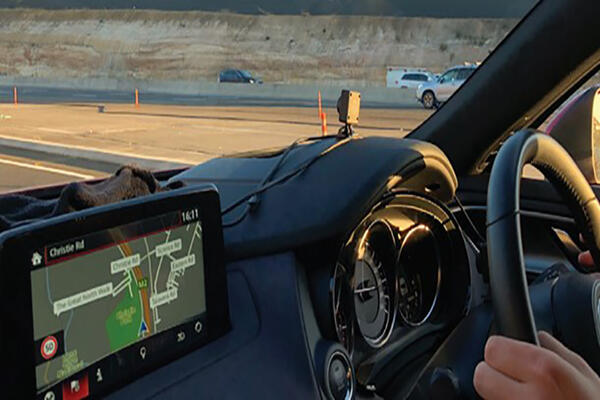
Connected and Automated Vehicle (CAV) network readiness case study
Connected and Automated Vehicle (CAV) network readiness case study
With human error estimated to contribute to around 90 per cent of road accidents, technologies that can assist the driver and eventually automate the driving task could provide significant improvements in road safety.
To safety allow the integration of connected and autonomous vehicles within our existing road network we need to conduct autonomous vehicle research and analysis.
In partnership with Transurban we led a CAV readiness case study to understand and access the compatibility of Sydney’s motorway infrastructure with automated vehicle technology.
This included investigating compatibility of lane markings, speed signs, variable messaging and other road conditions on the systems that support automated driving.
During the study professional drivers drove model vehicles with partial automation features such as lane keep assist, adaptive cruise control and traffic sign recognition on major Sydney motorways such as the:
- Warringah Freeway
- Cahill Expressway
- M2 Hills Motorway
- M5 East Freeway and
- Westlink M7.
Our image below shows footage taken from a trip along the M2 Hills Motorway.
Throughout the trial all drivers received an on-road briefing session and remained in control of the vehicle at all times.
After each on-road test observations were recorded to track how the vehicles automated features responded to road infrastructure.
Each on-road test iteration introduced further complexity with more vehicles, different light conditions, or different levels of congestion.
The project is now complete and a number of key findings can be drawn from the research including:
- electronic speed signs were challenging for some autonomous vehicles to detect, although flashing signs were generally more reliable than static signs
- permanent bollards to separate lanes sometimes interfered with lane keeping
- long cracks or non-typical changes in the road surface often interfered with lane keeping.
Data from the trial has been logged and analysed for planning the safe introduction of automated vehicles and sets the platform for future Transport for NSW road audits.
Read more information about the project and lessons learnt from the CAV readiness case study.
